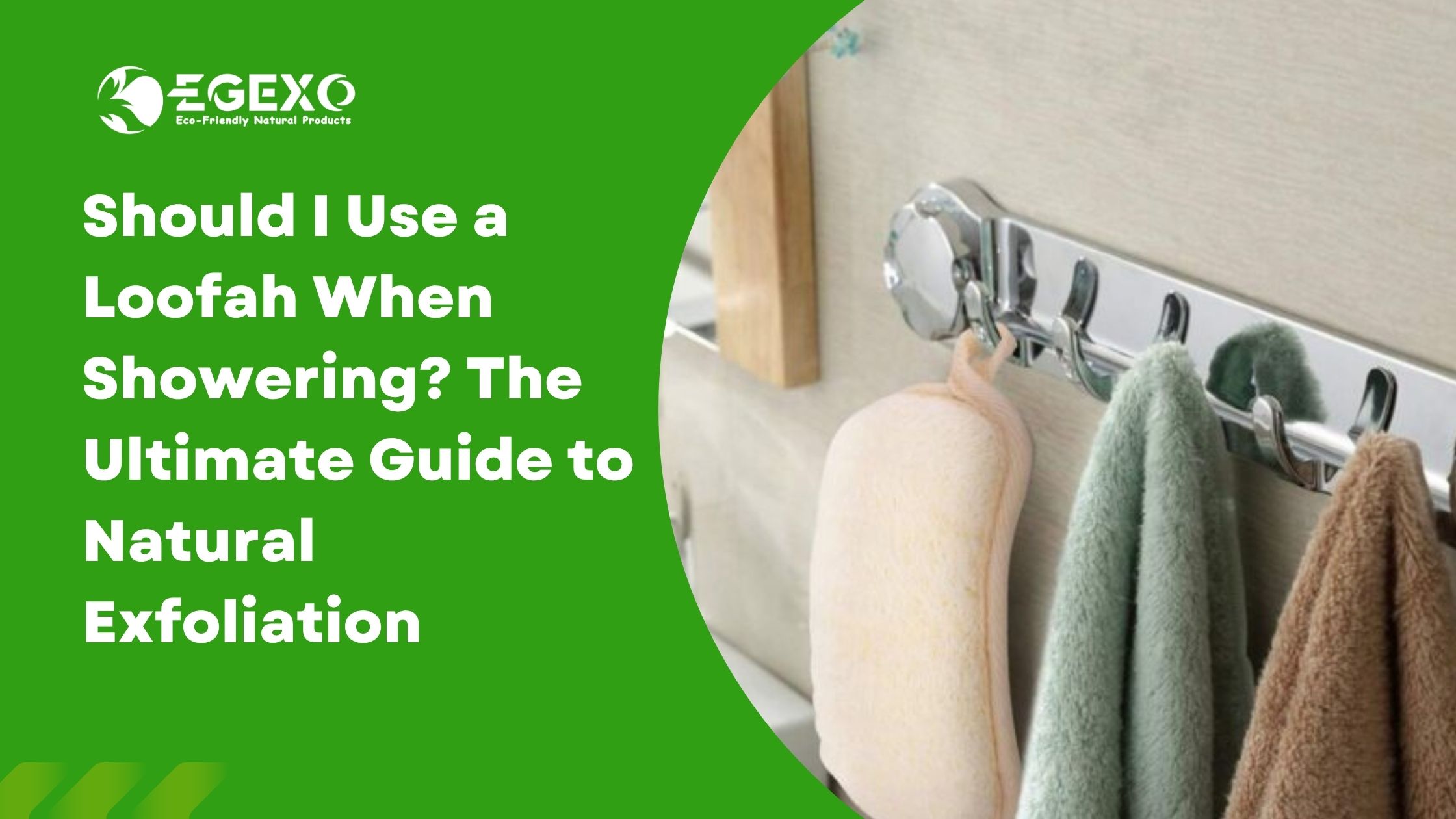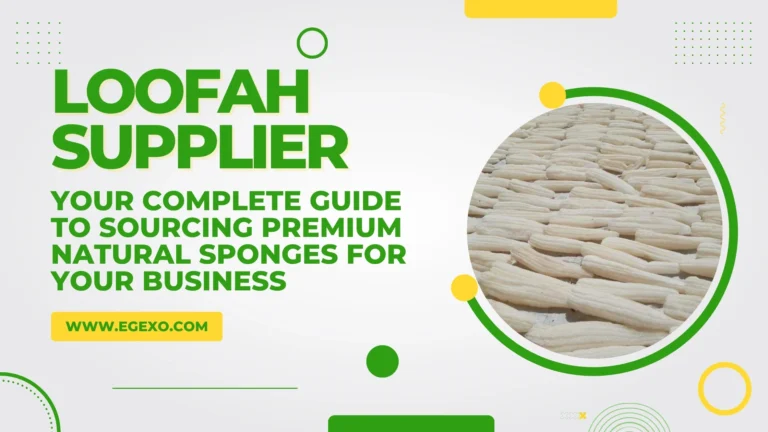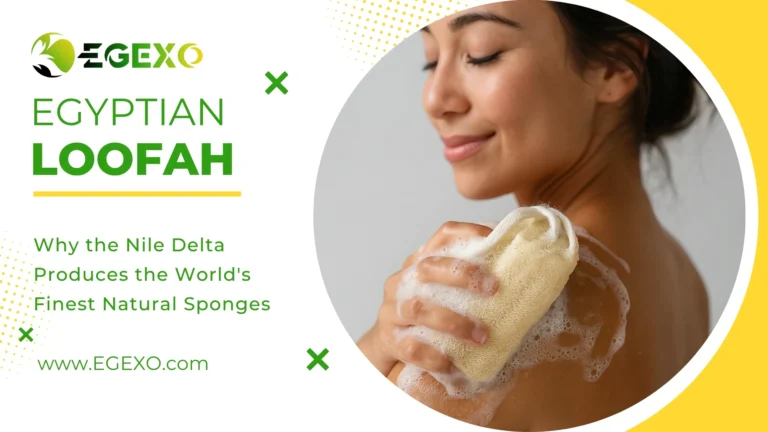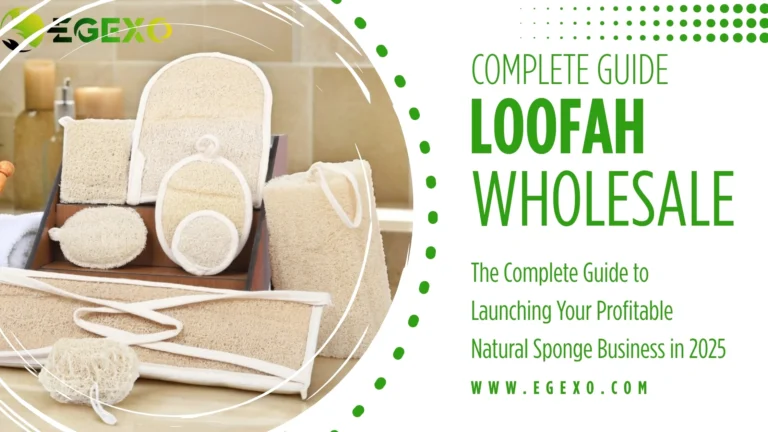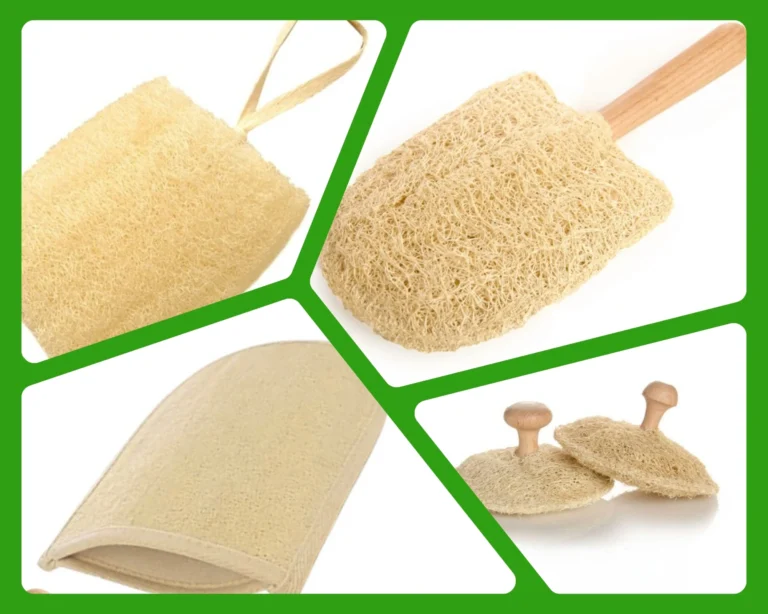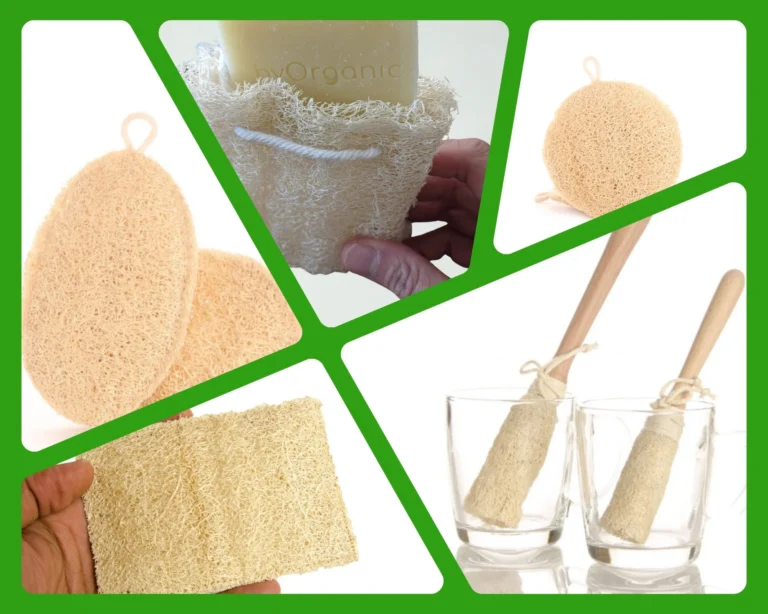Should I Use a Loofah When Showering? The Ultimate Guide to Natural Exfoliation
Picture this: you’re standing in your shower, holding a rough, fibrous sponge that looks like it came straight from nature’s own cleaning supply closet. That’s your loofah sponge – and you’re about to discover why this humble natural wonder might just revolutionize your daily shower routine.
The question “Should I use a loofah when showering?” has sparked countless debates in bathrooms worldwide. Today, we’ll dive deep into the world of natural loofahs, exploring everything from their ancient origins to modern-day benefits, helping you make an informed decision about whether these exfoliating sponges deserve a permanent spot in your bathroom.
What Exactly Is a Loofah Sponge?
Before we explore whether you should use a loofah when showering, let’s clarify what we’re dealing with. Despite common misconceptions, a natural loofah isn’t actually a sea sponge – it’s a dried gourd from the luffa plant, part of the cucumber family. These Egyptian loofahs and other varieties have been used for centuries as natural cleaning and exfoliating tools.
When the luffa fruit matures and dries, it reveals a fibrous interior that creates the perfect natural exfoliating sponge. This process transforms what starts as a smooth, green vegetable into the textured, absorbent cleaning tool we know today.
The Historical Journey: From Ancient Egypt to Modern Bathrooms
The use of loofah sponges dates back thousands of years. Ancient Egyptians discovered that dried luffa gourds made excellent cleaning tools, and this knowledge spread throughout the Mediterranean and beyond. Archaeological evidence suggests that these natural sponges were valued not just for personal hygiene, but also for their versatility in household cleaning.
Today’s Egyptian loofah products maintain this ancient tradition while meeting modern quality standards, offering the same natural benefits our ancestors enjoyed.
Should You Use a Loofah When Showering? The Benefits Unveiled
1. Superior Exfoliation for Healthier Skin
The primary answer to “Should I use a loofah when showering?” lies in the exceptional exfoliating properties of natural loofahs. Unlike synthetic scrubbers, loofah sponges provide gentle yet effective removal of dead skin cells, promoting cellular renewal and revealing smoother, more radiant skin.
Dr. Sarah Martinez, a dermatologist with 15 years of experience, explains: “Natural loofahs offer the perfect balance of texture and gentleness. They remove dead skin without the harsh chemicals found in many commercial exfoliating products.”
2. Enhanced Circulation and Lymphatic Drainage
Regular use of an exfoliating sponge during your shower routine can stimulate blood flow and support lymphatic drainage. The gentle massaging action helps promote better circulation, which can contribute to overall skin health and even help reduce the appearance of cellulite over time.
3. Improved Product Absorption
When you use a loofah sponge to exfoliate before applying moisturizers or body oils, you’re creating a clean canvas for these products. Freshly exfoliated skin absorbs moisturizers more effectively, maximizing the benefits of your skincare routine.
4. Natural and Sustainable Choice
In an era of increasing environmental consciousness, choosing a natural loofah over synthetic alternatives makes ecological sense. These biodegradable sponges come directly from plants, making them a sustainable option for eco-minded consumers.
How to Properly Use a Loofah When Showering
Step-by-Step Shower Routine
- Preparation: Soak your loofah sponge in warm water for 30 seconds to soften the fibers
- Apply Body Wash: Use your favorite soap or body wash with the damp loofah
- Gentle Circular Motions: Work the luffa sponge across your skin using light, circular movements
- Focus Areas: Pay special attention to rough areas like elbows, knees, and heels
- Rinse Thoroughly: Remove all soap residue from both your skin and the loofah
- Proper Storage: Hang your loofah in a well-ventilated area to dry completely
Frequency Guidelines
For most skin types, using a loofah sponge 2-3 times per week provides optimal benefits without over-exfoliation. Those with sensitive skin should start with once-weekly use and gradually increase frequency based on their skin’s response.
Are There Any Drawbacks to Consider?
Potential Concerns and Solutions
While the question “Should I use a loofah when showering?” generally receives a positive answer, there are some considerations:
Bacterial Growth: Like any damp bathroom accessory, loofahs can harbor bacteria if not properly maintained. The solution? Regular cleaning and complete drying between uses.
Over-Exfoliation: Excessive use can irritate sensitive skin. The key is moderation and listening to your skin’s needs.
Quality Variations: Not all loofah sponges are created equal. Choosing high-quality, properly processed natural loofahs ensures the best experience and longevity.
Different Types of Loofah Sponges for Various Needs
Body Loofah Products
Bath and body loofah products come in various shapes and sizes, from flat pads perfect for facial use to long strips ideal for reaching your back. Each design serves specific purposes in your shower routine.
Raw Loofah Scrubbers
For those seeking maximum customization, raw loofah scrubbers can be cut and shaped to meet individual preferences. These unprocessed sponges offer the purest form of natural exfoliation.
Multi-Purpose Applications
Beyond answering “Should I use a loofah when showering?”, it’s worth noting that loofahs excel in other areas too. Kitchen and household loofah products provide chemical-free cleaning for dishes and surfaces, while loofah pet and spa grooming products offer gentle care for our four-legged friends.
Expert Insights: What Professionals Say
Spa professional Jennifer Clark shares her perspective: “In our treatments, we’ve observed that clients who regularly use natural loofahs maintain better skin texture and require fewer intensive exfoliating treatments. The consistent, gentle action of a quality luffa sponge provides cumulative benefits that synthetic alternatives simply can’t match.”
Dermatological studies support these observations, showing that regular gentle exfoliation can improve skin tone, reduce ingrown hairs, and enhance the effectiveness of topical treatments.
Choosing the Right Loofah: Quality Matters
What to Look for in a Premium Loofah Sponge
When considering whether to use a loofah when showering, the quality of your chosen sponge makes all the difference. Premium Egyptian loofahs typically feature:
- Uniform fiber density
- Natural color without artificial bleaching
- Appropriate firmness for effective exfoliation
- Proper processing to remove plant residues
- Sustainable harvesting practices
Understanding the farm to export process helps consumers appreciate the journey from plant to bathroom, ensuring they choose products that meet high quality standards.
Business Opportunities in the Loofah Market
For entrepreneurs asking “Should I use a loofah when showering?” from a business perspective, the answer is overwhelmingly positive. The global natural sponge market continues expanding as consumers seek eco-friendly alternatives to synthetic products.
Opportunities exist in:
- Retail distribution of premium loofah products
- Private labeling services for custom branding
- Custom product design for unique market niches
- Wholesale supply to spas, hotels, and retailers
The Environmental Impact: Why Natural Matters
Choosing natural loofah sponges over synthetic alternatives significantly reduces your environmental footprint. Unlike plastic scrubbers that persist in landfills for decades, natural loofahs biodegrade completely, returning nutrients to the soil.
This environmental benefit extends beyond personal use. Businesses incorporating natural loofahs into their product lines appeal to increasingly eco-conscious consumers while supporting sustainable agricultural practices.
Addressing Common Myths and Misconceptions
Myth 1: “Loofahs Are Too Rough for Daily Use”
Reality: Quality natural loofahs become softer with use and proper preparation. The initial firmness mellows into perfect exfoliating texture.
Myth 2: “Synthetic Sponges Are More Hygienic”
Reality: With proper care, natural loofahs are just as hygienic as synthetic alternatives, without the environmental impact of petroleum-based products.
Myth 3: “All Loofahs Are the Same”
Reality: Significant quality variations exist between suppliers, making source selection crucial for optimal results.
Creating Your Perfect Shower Experience
Incorporating a loofah sponge into your shower routine transforms a mundane daily task into a spa-like experience. The gentle massage, improved circulation, and resulting skin softness create moments of self-care within busy schedules.
Consider pairing your natural loofah with complementary products like natural oils or gentle, sulfate-free cleansers to maximize benefits while maintaining skin health.
The Future of Natural Body Care
As consumers increasingly prioritize sustainability and natural products, loofah sponges represent a return to time-tested solutions. This trend benefits both individual health and environmental wellbeing, making the choice to use natural exfoliating sponges both personally and globally beneficial.
FAQ: Everything You Need to Know About Loofah Sponges
Q: Should I use a loofah when showering if I have sensitive skin?
A: Yes, but start slowly. Use a well-soaked, soft natural loofah once weekly initially, gradually increasing frequency as your skin adapts. Choose gentler, finer-textured varieties for sensitive skin.
Q: How often should I replace my loofah sponge?
A: Replace your natural loofah every 3-4 weeks with regular use. Signs it’s time for replacement include persistent odors, visible wear, or reduced effectiveness.
Q: Can I use a loofah sponge on my face?
A: Use only specially designed facial loofahs with finer textures. Regular body loofahs may be too rough for delicate facial skin.
Q: What’s the difference between Egyptian loofah and other varieties?
A: Egyptian loofahs are renowned for their superior fiber quality, density, and durability due to ideal growing conditions and traditional processing methods.
Q: How do I properly clean my loofah sponge?
A: Rinse thoroughly after each use, squeeze out excess water, and hang in a well-ventilated area. Weekly sanitizing with diluted vinegar or brief microwave steaming helps maintain hygiene.
Q: Are natural loofahs better than synthetic exfoliating tools?
A: Natural loofahs offer environmental benefits, gentle yet effective exfoliation, and biodegradability. They provide consistent results without chemicals or microplastics.
Q: Can businesses benefit from selling loofah products?
A: Absolutely. The growing demand for natural, sustainable personal care products creates excellent opportunities for retailers, distributors, and private label brands.
Q: Where can I find high-quality loofah sponges?
A: Look for suppliers who emphasize quality standards, sustainable practices, and proper processing. Egexo offers premium Egyptian loofahs with comprehensive quality assurance.
Conclusion: Your Path to Natural Exfoliation
So, should you use a loofah when showering? The evidence overwhelmingly supports incorporating these natural exfoliating sponges into your routine. From improved skin health and circulation to environmental benefits and spa-like experiences, quality loofah sponges offer numerous advantages with minimal drawbacks.
Whether you’re seeking personal wellness benefits or exploring business opportunities in the natural products market, loofah sponges represent a perfect intersection of tradition, sustainability, and effectiveness.
Ready to experience the benefits of natural exfoliation? Explore premium Egyptian loofah products and discover why millions of people worldwide have made natural loofahs an essential part of their daily routines.
For businesses interested in loofah wholesale opportunities, request a quote or request samples to experience the quality difference firsthand.

